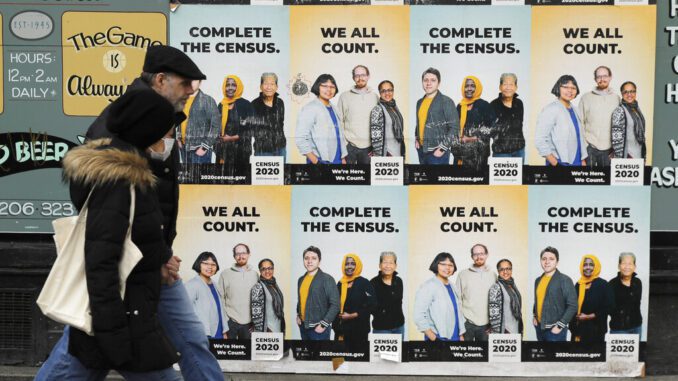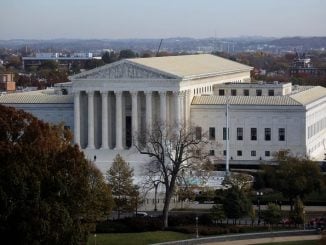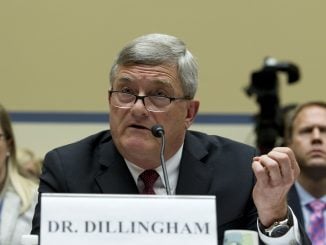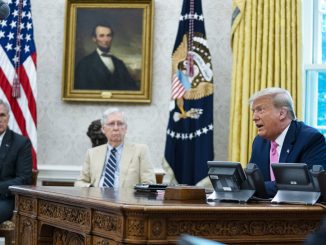
For the 2010 Census, René D. Flores, a Mexican American college professor, marked his race as “white.”
Since then, a genealogy test revealed he has 43% Native American ancestry. He is among millions more people who now identify as having two or more races, or being multiracial.
“I hesitated before because I did not have the cultural upbringing when I was growing up. There are many millions of Americans that are feeling the same way,” Flores said.
From McKenzie County, North Dakota, to St. Johns County, Florida, the growth in the number of people who identified as multiracial on 2020 census responses soared over the last decade, rising from under 3% to more than 10% of the U.S. population from 2010 and 2020.
The multiracial boom reflects the complex racial and ethnic diversity of the U.S. It also may be the result of changes the U.S. Census Bureau made in processing responses that better capture diversity and how it asked about race and ethnicity in order to better reflect the nation’s changing mosaic, experts say.
In an age of easily accessible DNA testing kits, the growth reflects a deepening of the way Americans think about themselves when it comes to racial identity, experts say.
Juan Manuel Pedroza, an assistant professor of sociology at the University of California, Santa Cruz, said the 2020 results should be regarded with some caution considering the hurdles the Census Bureau faced in getting responses and a history of undercounts in communities of color. Still, the increase in the percentage of people who identified as multiracial is significant and indicative of how the country is changing, Pedroza said.
Yes, the country is diversifying. But also, there’s much less stigma attached to being multiracial, and there’s more conversation about it. So someone who marked themselves as strictly white in 2010 may have chosen two or more races this time around in part because of societal changes, Pedroza said.
“As we talk more about multiracial identity, the boundaries around what it means to be of a single race, or just one race, I think those boundaries are changing,” Pedroza said.
Pedroza pointed to a study from a group of sociologists at Stanford who looked into whether the popularity of ancestry tests can change how Americans respond to survey questions about race and ancestry.
The study examined 100,000 adults in the U.S. who were registered as potential bone marrow donors and who, as a part of their registration, had been asked how much they knew about their ancestry, and how they came to learn it. The Stanford researchers analyzed those responses and found that people who have taken ancestry tests are more likely to identify as multiracial.
Still, that’s highly unlikely to account on its own for the dramatic jump in the numbers.
Flores, an assistant professor of sociology at The University of Chicago, said younger people might also be more open to identifying as multiracial.
“Of course, it’s not an easy conversation,” Flores said. But being multiracial “is part of my heritage as well.”
According to 2020 census data the Census Bureau, the number of people who identify as multiracial went from 9 million in 2010 to 33.8 million in 2020, if Hispanics are included. If Hispanics are taken out of the calculation, the multiracial numbers went from 5.9 million to 13.5 million people.
The largest combination of people identifying as multiracial was white and some other race, followed by white and American Indian and Alaska Native; white and black; and white and Asian.
The highest growth rates over the decade for people identifying as multiracial were in states that had a low multiracial share of the population to start with — Arkansas, Alabama and New Hampshire — which in 2020 was less than 5%.
In West Virginia, the multiracial population reached 4%, surpassing the Black population as the second-most prevalent group behind white people.
In states with already a large share of multiracial people, the growth was much slower than the rest of the nation. Among those states, 20% of the population identified as multiracial in Hawaii, and just under 10% did the same in Alaska and Oklahoma.
At the local level, the biggest growth rates over the past decade were in relatively small communities, places like Mackenzie, North Dakota, that saw rapid growth to the overall population. Mackenzie was the nation’s fastest-growing county over the decade due to an energy boom in North Dakota.
Since the first census in 1790, the U.S. government has collected data on race and started gathering information on Hispanic ethnic background during the 1970 census. Respondents have only been given the option of putting more than a single race on the census form since 2000, and further changes are likely in the 2030 census.
The Census Bureau says it improved the 2020 race question by adding space for respondents to write in further details about their race, so someone who marked “black” could also write “African American” or “Jamaican.” When crunching the numbers, Census Bureau statisticians expanded numeric codes in order to better capture a wider range of how people self-identify in the write-in answers.
“The results that we see over time, we want to reflect and acknowledge the changes in both the social and political constructs in our nation’s history,” said Nicholas Jones, director and senior advisor of Race and Ethnic Research at the U.S. Census Bureau.



